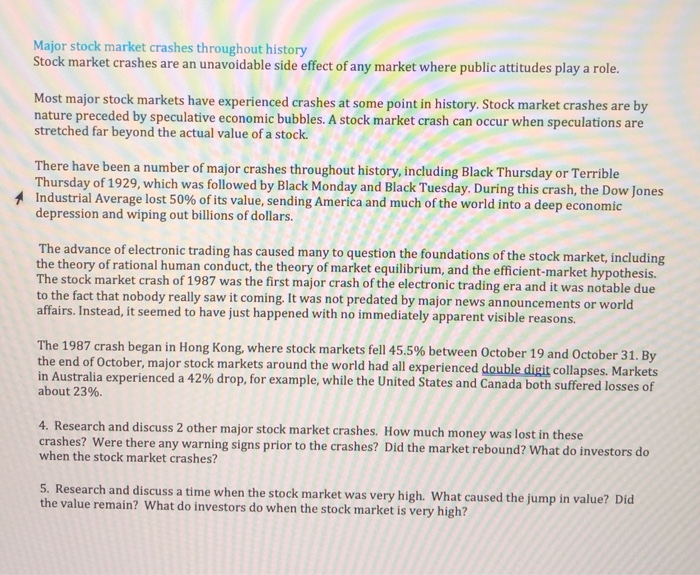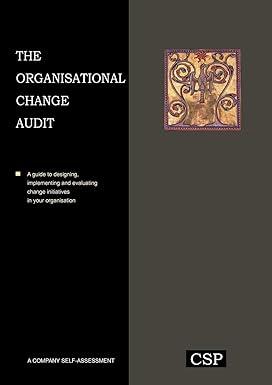Major stock market crashes throughout history Stock market crashes are an unavoidable side effect of any market where public attitudes play a role. Most major stock markets have experienced crashes at some point in history. Stock market crashes are by nature preceded by speculative economic bubbles. A stock market crash can occur when speculations are stretched far beyond the actual value of a stock. There have been a number of major crashes throughout history, including Black Thursday or Terrible Thursday of 1929, which was followed by Black Monday and Black Tuesday. During this crash, the Dow Jones Industrial Average lost 50% of its value, sending America and much of the world into a deep economic depression and wiping out billions of dollars. The advance of electronic trading has caused many to question the foundations of the stock market, including the theory of rational human conduct, the theory of market equilibrium, and the efficient-market hypothesis. The stock market crash of 1987 was the first major crash of the electronic trading era and it was notable due to the fact that nobody really saw it coming. It was not predated by major news announcements or world affairs. Instead, it seemed to have just happened with no immediately apparent visible reasons. The 1987 crash began in Hong Kong, where stock markets fell 45.5% between October 19 and October 31. By the end of October, major stock markets around the world had all experienced double digit collapses. Markets in Australia experienced a 42% drop, for example, while the United States and Canada both suffered losses of about 23%. 4. Research and discuss 2 other major stock market crashes. How much money was lost in these crashes? Were there any warning signs prior to the crashes? Did the market rebound? What do investors do when the stock market crashes? 5. Research and discuss a time when the stock market was very high. What caused the jump in value? Did the value remain? What do investors do when the stock market is very high? Major stock market crashes throughout history Stock market crashes are an unavoidable side effect of any market where public attitudes play a role. Most major stock markets have experienced crashes at some point in history. Stock market crashes are by nature preceded by speculative economic bubbles. A stock market crash can occur when speculations are stretched far beyond the actual value of a stock. There have been a number of major crashes throughout history, including Black Thursday or Terrible Thursday of 1929, which was followed by Black Monday and Black Tuesday. During this crash, the Dow Jones Industrial Average lost 50% of its value, sending America and much of the world into a deep economic depression and wiping out billions of dollars. The advance of electronic trading has caused many to question the foundations of the stock market, including the theory of rational human conduct, the theory of market equilibrium, and the efficient-market hypothesis. The stock market crash of 1987 was the first major crash of the electronic trading era and it was notable due to the fact that nobody really saw it coming. It was not predated by major news announcements or world affairs. Instead, it seemed to have just happened with no immediately apparent visible reasons. The 1987 crash began in Hong Kong, where stock markets fell 45.5% between October 19 and October 31. By the end of October, major stock markets around the world had all experienced double digit collapses. Markets in Australia experienced a 42% drop, for example, while the United States and Canada both suffered losses of about 23%. 4. Research and discuss 2 other major stock market crashes. How much money was lost in these crashes? Were there any warning signs prior to the crashes? Did the market rebound? What do investors do when the stock market crashes? 5. Research and discuss a time when the stock market was very high. What caused the jump in value? Did the value remain? What do investors do when the stock market is very high







